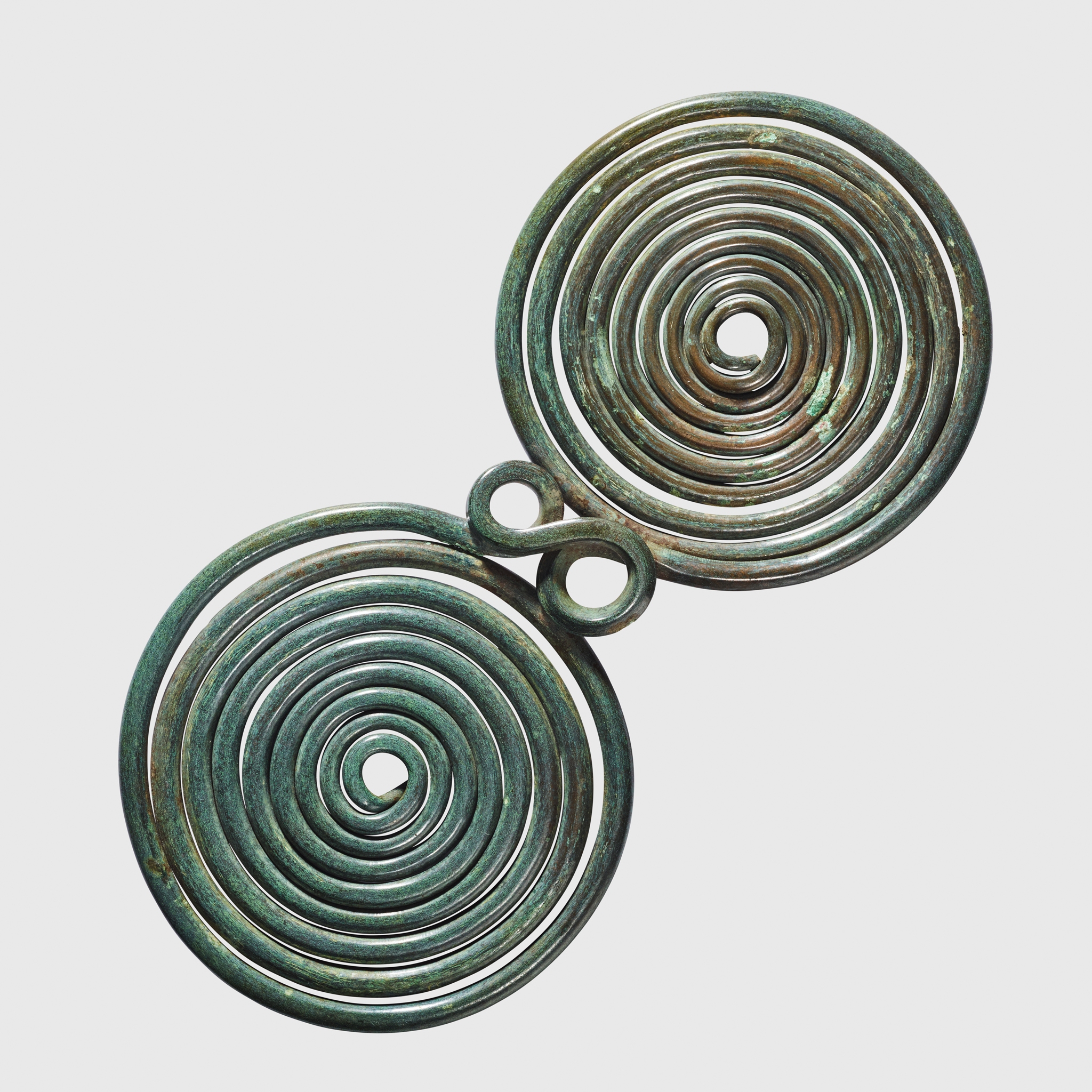LARGE BRONZE AGE SPIRAL PENDANT
CENTRAL EUROPE, C. 900 - 700 B.C.
Estimate: £400 - £600
Auction: 13 March 2025 from 13:00 GMT
Description
bronze wire, the "spectacle type" fibula formed of two opposing spiralled circular plates joined by a single looped bow, displaying a fine glassy green patination
Dimensions
15.7cm diameter
Provenance
Private collection, United Kingdom, formed 1990s
Footnote
The spiral motif is a prevalent feature of Bronze Age art across Europe, particularly in the Late Bronze Age around 1300-700 B.C. The spiral is believed to have held symbolic meaning, and its presence in various forms of art suggests that it held significance for people during this period. Its importance is widely debated, but it is often associated with notions of cyclical time, movement, and transformation.
The significance of the spiral in Bronze Age art may have also been influenced by the materials and techniques used in its production. Bronze Age artisans were skilled in the creation of intricate metalwork, and the spiral may have been seen as a way to showcase their technical abilities. It is also possible that the spiral was used as a decorative element to enhance the beauty and value of objects, such as jewellery and weapons.

